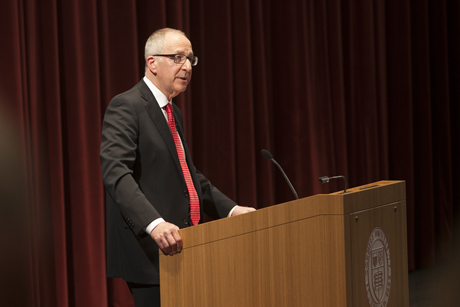By Rebecca Harrison
Reprinted from Cornell Chronicle, July 1, 2013
“Life is not a straight line,” as a former NFL lineman-turned-engineering professor will be the first to admit regarding the direction his career took – similar to many of his students, and even his own daughter.
Matt Miller, professor in the Sibley School of Mechanical and Aerospace Engineering, and his daughter, Chaney Miller ’14, a Cornell civil engineering major, addressed prospective science and engineering students in a film for a seminar on “Thinking Like a Scientist,” one of many workshops held during this year’s annual 4-H Career Explorations Conference, June 25-27. The conference hosted 600 high school students and chaperones from 45 New York counties.
Growing up, Chaney Miller shared a similar quality to many engineering students: She always liked building things. Like many students, though, her path changed in high school. “I got really involved in Spanish,” she said. “I had a really great teacher. She really got me fired up on languages, so that kind of stemmed into Mandarin. It was something that I really liked and wanted to pursue at Cornell.”
Said Matt Miller: “After she was admitted [to Cornell], she had decided to reinvestigate the possibility of being an engineer.”
During her first semester, Chaney Miller said she “just kind of got body slammed by a few of the exams.” Reminded by her father that “This is the way it goes; this is the process,” she persevered.
Charlotte Sweeney ’04, M.A. ’08, Ph.D. ‘13, discussed with students at the workshop how Chaney Miller’s success in languages led to an aptitude for engineering and how this could apply to a many career decisions. As one student observed: “We don’t think of languages as symbols, but a sentence is a little bit like an equation. I don’t think her leap was that giant from Mandarin, especially to engineering.”
Through exploring many Cornell programs, Chase Thomas, a junior at Oneonta High School and aspiring engineer, “saw that Cornell was a beautiful campus with smart and engaging teachers, where students can learn literally anything. They even have a particle accelerator under the campus!”
According to conference coordinator Nancy Schaff, there is a tradition of 4-H members coming to Cornell in June dating to 1922. “Lots of kids say it has made a difference in their college decisions and ultimately their career,” Schaff said. “Students stay in the dorms, eat in the dining hall and learn what college is like.”
This year, 10th to 12th grade students had an opportunity to explore nearly 20 programs ranging from permaculture to computer science, while eighth and ninth graders participated in the “University U” program, a broader sample of career-oriented workshops.
At the end of the conference, Anthony Burrow, assistant professor of human development, advised students: “… understand that you’re on a pathway. It’s hard for us to think of it like this. Life feels like a photograph looking at you in one point in time. But, you’re a movie. It’s dynamic; you’re moving. You got here for a reason. You came to career explorations for a reason. Why? Think about that.”
Rebecca Harrison ’14 is a writer intern for the Cornell Chronicle.


